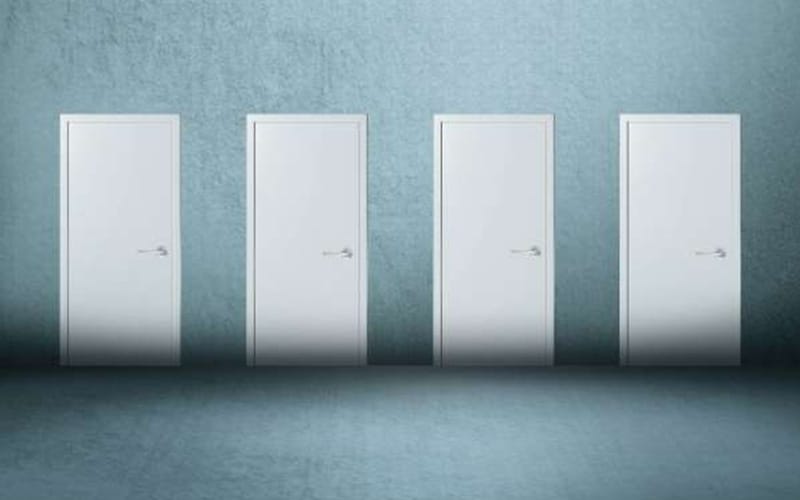Have you heard of the four doors of change? This model, created by Australian innovation expert Jason Clarke, demonstrates which doors are open (available) and closed (not available) in times of change. The model allows you and your team to categorise and understand the effects of a change, big or small, in your workplace. Whether it’s a change in people, process, location or resources, you can use this information to help your team understand what will change and what will stay the same.
The first door: Things that you did before, and will continue to do now
This door is an open door; it signifies everything you do now and will continue to do in the future. This is a particularly important door to talk about with your team if they are apprehensive about a change, or if there is a very significant change coming. It gives them and you stability and certainty that there will be some familiarity.
The second door: Things that you didn’t do before, and won’t do now
This is a door that was closed before and will remain closed. It remains consistent; this door focuses on things you didn’t need to do or think about before, and will continue to not think about or do in the future. Often, change will bring new tasks and challenges, which is exciting; but it can also represent more work and cause you or your team to feel a bit nervous about trying new things. Knowing that there are unfamiliar tasks that you won’t have to handle can be reassuring as you lean into to a new way of doing things.
The third door: Things that you did before, and won’t do now
This door is a closed door, that used to be open. Tasks that used to be manual might now be automated; and your team may feel unsure about whether this will be a success, and how it will affect their activity on a day to day basis. Something as simple as a change in office location meaning you or your team will no longer visit your favourite coffee shop is a closed door. Helping your team focus on letting go of these things, and replacing them with new routines, processes or activities will allow them to accept that these activities are no longer needed
The fourth door: Things you didn’t do before, and will do now
This door used to be closed and is now open. It has all the new things you will be taking on, to replace the things you have let go of. This door represents an opportunity for learning and growth, both for individuals and the organisation. These are new skills and processes that will allow you to develop your role, try new things and hopefully, see better outcomes as a result of your hard work in embracing these changes.
Putting it into practice
As a leader of an organisation or a team, it is important that you look at this model of change from different perspectives; your own perspective first, and then the perspective of the people you lead. Each of these doors will look different for every individual in your team, regardless of whether you are all experiencing the same change, or different changes.Understanding what the change will look like for you, and working through any nervousness you have, will help you better support your team and your organisation more broadly.Some useful questions to ask yourself are:
- What changes am I looking forward to? Why are these changes exciting for me?
- What changes am I apprehensive about? What do I need to feel better about these?
- What can I rely on to stay the same?
Once you have worked through these, ask your team the same questions. It will allow you to have an open and honest dialogue with them, understand how they are feeling, and create a space where they feel listened to and supported. Are you dealing with any change at work at the moment? Tell us about it in the comments below.






